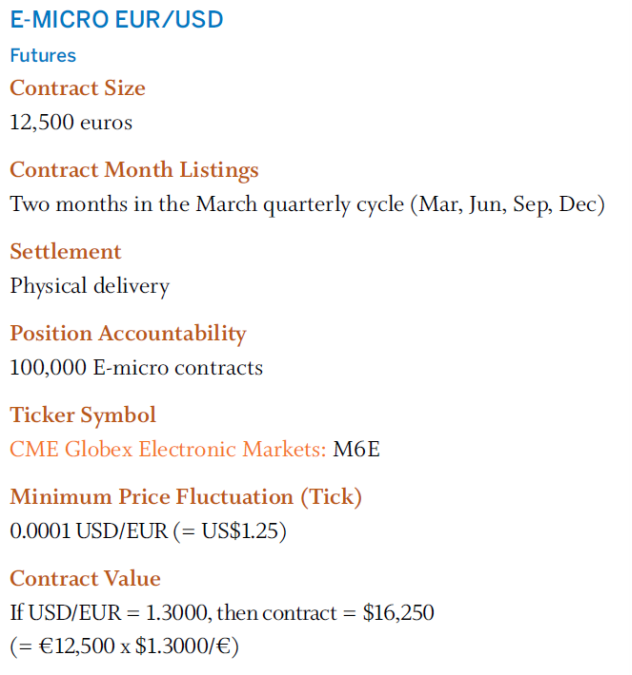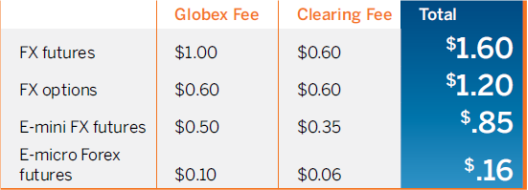Rolling Spot Forex, Forex CFDs, Currency Futures. 3 different ways to trade the swings in exchange rates. Ever since the FX probe back in 2013, the whole Forex vs Futures debate has become livelier. So, in this article, I will compare the pros and cons of rolling spot Forex to Futures, to help you understand which asset type is better for you to trade.
What are Currency Futures?
Currency Futures began in 1972 at the Chicago Mercantile Exchange (CME), which opened in 1898 (it is the largest Futures exchange in the U.S., with 6 product areas: stock indices, interest rates, currency, weather, commodities, and real estate). Why did the CME start to invest in currency derivatives? Trading in many derivative markets started to explode in the 1970s, so it was a trend they caught onto, which was led mainly by:
a) the disappearance of fixed exchange rates when the gold standard was abandoned in 1973.
b) inflation and interest rates rose and became volatile in the 1970s.
c) oil prices doubling and tripling in the two oil shocks of the 1970s (1974-75 and 1979-80).
All this volatility led to an explosion in the derivative markets for Futures contracts.
Spot Forex vs. Currency Futures

CME E-MINI Euro FX Futures showing Jun, Sep, and Dec contracts
The “spot” market is the cash market which means the current value (exchange rate) of where the currency pair is trading at right now. The “Futures” market represents the perception of where that same currency pair will be trading at on a specific date in the future. For example, if you are trading the September 2021 EUR/USD, the price represents today’s perceived value of the future (September 2021) exchange rate (as we are currently in May 2021). The further you go into the future month contracts, the less liquid they are and the more of a premium you pay. Usually, the close month replicates the spot value that you will see quoted on traditional Forex broker platforms.
Illustrations of the close month CME future in EUR/USD and a spot Forex broker quote
So, now that we have seen how trading the close (or “front month”) contract is practically equal to trading the spot market, let us make a crash comparison.
Spot Forex
- No Central Exchange (Over the Counter market): This means that the market you are trading is the market your broker is making for you. This has led to manipulation issues in the past, but nowadays FX brokers have become very competitive with their pricing engines and execution policies. Reputational risk is very important for Forex brokers, so their practices are generally less “shady” than in the past.
- Regulation issues: the spot Forex market is being regulated more and more. While the market is not directly regulated, the FX brokers that deserve credit are all regulated by the major bodies worldwide (NFA, SEC, CFTC, FCA, CONSOB, ETC.) and thus the client is somewhat protected. Also, client money is often put in segregated accounts, so in case your broker goes bust, your funds are protected.
- Broker May Act as Principal: most Forex brokers do not charge any commissions. Instead, they get paid by the “spread.” But often, they will act as principal, taking the other side of your trade. This means that your goals and their goals may not be in alignment as you are essentially trading against each other. This does not mean Forex brokers are trading against you or trying to hunt your stops. This simply means that your losses are their profits, and vice versa. Since most aspiring traders lose money, brokers are interested in acting as principal.
- Counterparty Risk: you must make sure you know exactly where your funds are being held. Are they being held at a large bank in a segregated account, or some account that the broker has rights to? Again, reputable brokers regulated with the FCA, NFA, CONSOB, etc. must follow best practices to keep client money safe. With that said, counterparty risk is real, and it is always a good practice to deposit only a part of your risk capital with your broker.
- No Commissions: most Forex brokers do not charge commissions. Instead, they take the best bid and best offer from their interbank counterparties and add a markup.
- Big Leverage: in spot Forex, 100:1 leverage is not uncommon if you are resident outside the G7 nations. This means you can open an account with as little as $100 dollars and begin trading. This means that trading through a Forex broker is cheaper. However, while it is great to be able to use so little margin for trading (making it really “cheap” to trade FX), keep in mind that leverage can work against you as well.
Futures
- Single Central Exchange (CME or another major exchange): the Chicago Mercantile Exchange (CME) is the home of Forex futures. The CME is one of the largest exchanges in the world and is very well capitalized. Some of the largest banks use the CME Forex futures to hedge currency risk.
- Transparent Volume: because there is a central exchange, we can see trading volume and open interest easily and everyone has access to it.
- Well Regulated (SEC, NFA): the CME has double regulation. They are a Futures exchange, so they are under the watchful eye of the NFA and the SEC. They are also a publicly traded company, so they have another level of regulation that comes with that structure.
- Trades Matched on Globex: as with other Futures markets, Futures are traded in the trading pit but also on the Globex system. The Globex system is an electronic order matching system much like NASDAQ for stocks. There is no broker on the other side of your trade. Instead, when you buy, your order is matched up with a seller like you, not a broker. So, conflicts of interest are reduced.
Spot Forex vs Futures Cost Comparison
When comparing currency Futures vs Forex, the main difference is the cost. Futures are more expensive than Forex. It is not realistic to trade Futures (even mini or micro size) with less than $1,000. A realistic starting account should be around $10,000.
The CME offers 3 different products for FX:
- Majors (full contract size and best liquidity)
- E-Mini (half of a full contract size, less liquidity)
- E-Micro (1/10th of a full contract size, less liquidity)
The minimum requirement is still higher than the typical spot Forex broker requirement, as you can see from the contract specifications below.

CME E-micro contract specifications (1/10th a normal contract)
Now that we have an idea of the minimum trade size, let us view the margin requirements for the micro-EUR/USD Futures:

Maintenance Margin is $220 (Source: www.cmegroup.com)
And here are the fees for trading with the CME, which of course you must add to the market spread:

CME Trading Fees (Source: www.cmegroup.com)
Now compare that to the costs that your typical retail spot Forex broker will charge. Most such brokers offer 2 types of accounts:
- a retail-level account where trading costs are included in the spread,
- a professional-level account where costs are separate: typically, spreads are much smaller and there is a commission also.
Below are 2 examples to illustrate the pricing models offered by a typical spot Forex broker.
Example 1:
Let us assume the average spread on the EUR/USD currency pair is 1.1 pips.
You buy 100,000 EUR/USD and sell 100,000 EUR/USD.
Your total trading cost, when only paying the spread, is 1.1 pips * 2 = 2.2 pips round turn (1.1 when buying, 1.1 when selling).
So how much are you paying? It depends on the value of the EUR/USD at the time. The stronger the Euro is (i.e., the weaker the USD is), the more the transaction will cost. If the rate is about 1.2200 (as it was at the time of writing) then the following calculation applies:
- 100.000 * 1.22 = 122.000 USD
- 1 pip = 1.2200 * $10 = 12.2 USD
- 2.6 pips = 2.6 * $12.2 = $31.72 per 100,000 traded.
If you are trading a mini lot (10K), your cost would be USD 3.172 and if you were trading a micro-lot, your cost would be USD 0.3172 (32 cents).
Example 2:
Now let us see the kind of structure professional traders might pay "all-in".
In this type of account, the typical spread offered on EUR/USD might be about 0.3 pips. That means 0.6 pips round-turn.
A typical commission structure for professional traders might be between $3 to $4 per side ($6 to $8 round-turn), per full lot traded.
If you again buy and sell 100,000 EUR/USD at 1.2200 the math is as follows:
- 1 pip = 1.2200 * $10 = 12.2 USD
So, the total cost for the professional account would be:
- spread cost: 0.6 pips round turn = 0.6*12.2 = 7.32 USD
- commission of 4 USD/Lot: 1.22*4*2 (in and out) = 9.76 USD
All-In Cost = 9.76 + 7.32 = 17.08 USD which is around a 50% discount compared to regular retail pricing.
Even if the spread on the CME were 0.5 pips, for 1 mini contract you would still be paying 1 pip round turn (1.22 USD) + 1.17 USD commission round turn which is 2.39 USD – better than your average retail spot Forex broker, but certainly not as competitive than your active trader or professional all-in costs.
Bottom Line
The conclusion to the spot Forex vs Futures debate is quite simple. Spot Forex is more accessible, and the low deposit entry barrier makes it easy to trade. However, it takes a lot more due diligence on the trader's part to find a reputable Forex broker that will keep his funds safe and answer the phone in the event of a black swan. With Futures, there is hardly any due diligence to be done. However, the trading capital necessary to trade Futures is more than for spot. Also, you must find out what type of fees your Futures broker will apply on top of the regulated exchanges' fees. So, Futures are potentially more expensive to trade: you are paying for standardization and zero conflicts of interest.
FAQs
What is better, Futures or Forex?
For the average retail trader, trading Forex is probably the way to go. It is more accessible and there are regulated brokers to trade with. For sophisticated investors with more capital, Futures are probably the better choice.
Which is more profitable: Futures or Forex?
As we have seen in this article, the front-month Futures contract is an exact replica of the Forex market prices. The key to profitability is not the instrument (Forex or Futures); it is your strategy and discipline.
Why is Forex a bad idea?
Forex is not really a bad idea. It is an over-the-counter market that has been functioning well for 50 years. You just need to make sure you are trading with a reputable broker.
Is Forex trading the future?
Forex trading will always be around, because international corporations need to use the Forex market to hedge currency risk. But the future will potentially more trading volume in cryptocurrencies than traditional fiat currencies.
https://www.dailyforex.com/forex-articles/2021/05/the-difference-between-forex-and-futures-revealed/162810
2021-05-23 12:43:14Z
CBMiamh0dHBzOi8vd3d3LmRhaWx5Zm9yZXguY29tL2ZvcmV4LWFydGljbGVzLzIwMjEvMDUvdGhlLWRpZmZlcmVuY2UtYmV0d2Vlbi1mb3JleC1hbmQtZnV0dXJlcy1yZXZlYWxlZC8xNjI4MTDSAQA
Bagikan Berita Ini
















0 Response to "The Difference Between Forex and Futures Revealed - DailyForex.com"
Post a Comment